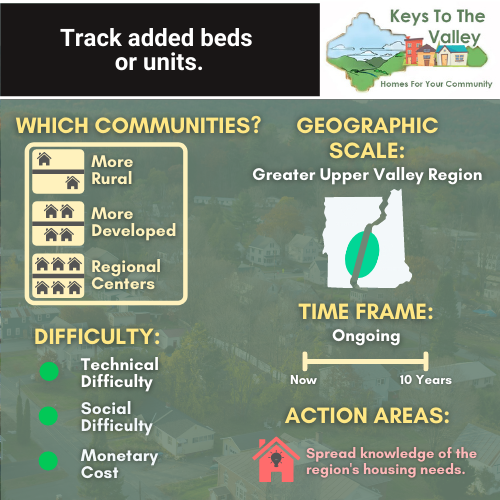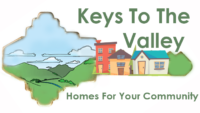Tracking completed homes or available beds is an important evaluation tool to enumerate how our homes are changing. This data would allow stakeholders and residents to note whether or not goals are being reached in regards to quantity, affordability, and accessibility. It would also allow communities to evaluate whether specific policies or activities are working as intended. With this information, communities can assess whether planning and policy modifications are working, or new strategies are necessary. The Vital Communities New Homes initiative addresses aspects of this tool, however, the dataset requires further support to ensure consistency of available data and capacity to be done at the full regional scale.
In order to be effective, data collection methodologies must be easy, bring value to the user, reflect available information and variations across communities, and have regularly-scheduled collection. It is best that local methodologies be developed to track new completed units or beds of the following types:
- Units resulted from new construction.
- Units resulted from conversions of existing structures, either due to change in use or in the number of units.
- Units with physically accessible features resulted from new construction or renovations.
- New beds available for emergency housing.
- New beds or units available for homes with supportive services.
- Units or beds lost.
This data would primarily come from assessing and permitting, and some towns do not require any permits for construction so additional basic permitting will be needed to fill this void. Such permitting will also ensure health and safety issues are not being created, homes are on tax rolls, as well as houses are being geolocated for E911.


